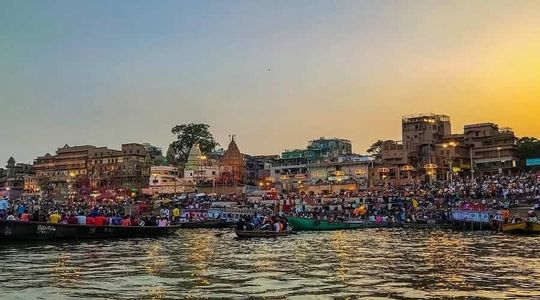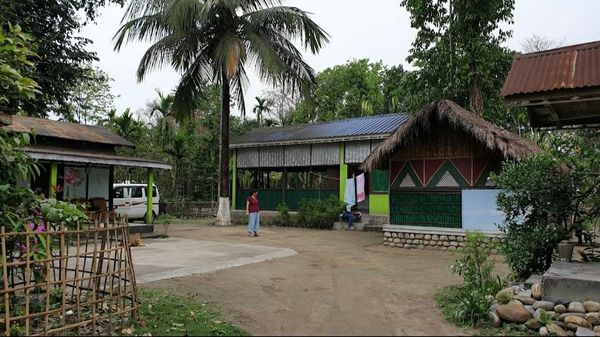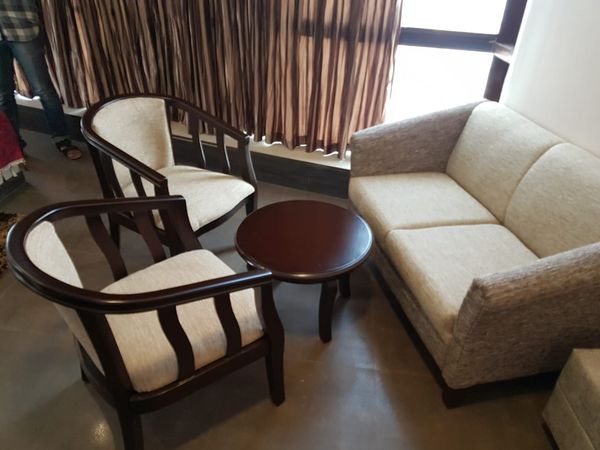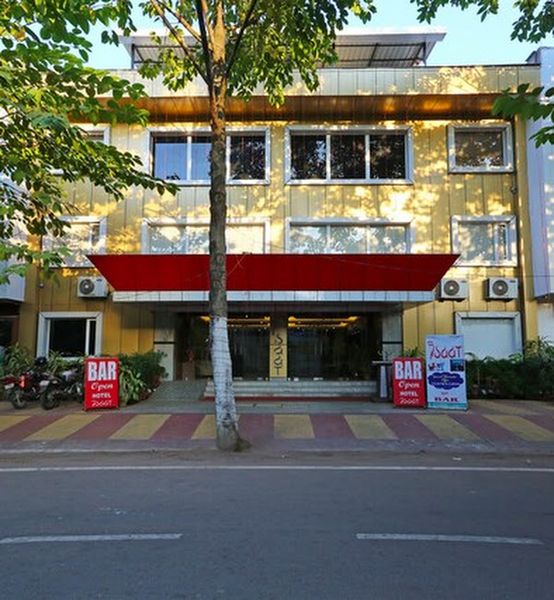Planning a Family Trip to Varanasi: A Comprehensive Guide
 Neha Rawat
17 Dec, 2024
13 mins read
1299
Neha Rawat
17 Dec, 2024
13 mins read
1299

Varanasi, one of the oldest living cities in the world, holds a sacred place in the hearts of Hindus and is a prominent cultural hub in India. Known for its ghats, temples, vibrant culture, and rich history, Varanasi is a city that offers a unique experience for travelers, especially for families. Whether you are planning a spiritual journey, a cultural exploration, or just looking to experience the hustle and bustle of an ancient city, Varanasi has something to offer for everyone. This guide provides all the details you'll need to plan a memorable family trip to Varanasi, including the best time to visit, essential attractions, accommodation, transportation, and cultural tips.
1. Understanding Varanasi: An Introduction
Varanasi, also known as Kashi and Benares, is located on the banks of the holy river Ganges in Uttar Pradesh, India. It is regarded as the spiritual capital of India and attracts millions of pilgrims, tourists, and scholars every year. The city is famous for its ancient temples, especially the Kashi Vishwanath Temple, and its iconic ghats, where people perform religious rituals, take holy dips, and cremate the deceased.
For families, Varanasi offers a blend of spirituality, history, culture, and nature, making it an enriching destination for travelers of all ages.
2. Best Time to Visit Varanasi
Before planning the trip, it is essential to choose the right time to visit Varanasi, as the weather can greatly influence the experience.
- Winter (October to March): The best time to visit Varanasi is during the winter months when the weather is cool and pleasant. The temperatures range between 5°C to 25°C, making it ideal for sightseeing and outdoor activities. This is the peak tourist season, so expect the city to be busy, but it's also when major festivals like Diwali, Holi, and the Kumbh Mela (held every 12 years) take place.
- Summer (April to June): Summer in Varanasi can be extremely hot, with temperatures soaring above 40°C. While it is less crowded, this is not the most comfortable time for sightseeing, especially for families with young children or elderly members.
- Monsoon (July to September): The monsoon season brings heavy rainfall, which can disrupt travel plans and make the streets slippery and muddy. It’s generally not recommended for families with young children to visit during this time.
3. Planning the Duration of the Trip
A trip to Varanasi can be planned for 3-5 days, depending on how much time you want to spend exploring the city. The major attractions in the city can be covered in about three days, but you may want to extend your stay to visit nearby places or experience the local culture more deeply.
4. How to Reach Varanasi
Varanasi is well-connected to major cities in India, making it relatively easy to reach by air, train, or road.
- By Air: The Lal Bahadur Shastri International Airport (VNS) is the main airport in Varanasi, with flights connecting the city to major metropolitan areas like Delhi, Mumbai, Kolkata, and Bangalore. From the airport, you can hire a taxi or use local transport to reach your accommodation.
- By Train: Varanasi Junction is a major railway station in India, well-connected to all major cities. Trains from cities like Delhi, Kolkata, and Mumbai run regularly, making it a convenient option for families traveling by train. The station is located about 5-6 km from the ghats.
- By Road: Varanasi is accessible by road from major cities in Uttar Pradesh and neighboring states. You can either drive yourself or hire a taxi. The roads are generally well-maintained, though traffic can be chaotic at times, especially in the city center.
5. Accommodation Options for Families
Varanasi offers a wide range of accommodation options to suit all budgets. Families can choose from luxurious hotels, mid-range options, and budget guesthouses. Here are some of the popular family-friendly accommodation choices:
- Luxury Hotels: For families seeking comfort and luxury, properties like the Taj Nadesar Palace, Ramada Plaza, and Clarks Varanasi provide excellent amenities and scenic views of the river. These hotels often have large family rooms, swimming pools, and on-site restaurants offering diverse cuisines.
- Mid-range Hotels: If you’re looking for something more affordable but still comfortable, hotels like The Gateway Hotel Ganges and Hotel Surya provide spacious rooms, good service, and convenient locations near key attractions.
- Budget Hotels: There are plenty of budget-friendly guesthouses and hotels in Varanasi, especially near the ghats. These options offer a more authentic experience of the city, although the amenities may be basic.
- Homestays: For a more intimate, cultural experience, consider staying in a homestay. This can provide insight into the local lifestyle and help your family connect more deeply with the culture.
6. Essential Attractions to Visit with Your Family
Varanasi is known for its spirituality, history, and culture. Some key attractions for families include:
- The Ghats of Varanasi: The ghats are the heart of Varanasi, and no trip to the city is complete without visiting them. The most famous is Dashashwamedh Ghat, where evening Ganga Aarti is performed. Assi Ghat is quieter and perfect for a family visit, while Manikarnika Ghat is the primary cremation ghat. It's advisable to take a boat ride along the river to get a bird’s-eye view of the ghats.
- Kashi Vishwanath Temple: One of the holiest temples in India, dedicated to Lord Shiva, this temple is a must-visit for families interested in the spiritual heritage of the city. The temple is located near the ghats, so it’s easy to combine with a visit to the river.
- Sarnath: Located about 10 km from Varanasi, Sarnath is an important Buddhist site where Lord Buddha delivered his first sermon. The Dhamek Stupa, Sarnath Museum, and the Mulagandha Kuti Vihara are all fascinating to visit, especially for families with children interested in history.
- Banaras Hindu University (BHU): Founded in 1916, BHU is one of the oldest and largest residential universities in India. The campus is beautiful, and you can visit the Bharat Kala Bhavan Museum to see rare artifacts and sculptures. The university’s Vishwanath Temple is also a spiritual landmark.
- Manmandir Ghat and Observatory: For a bit of history and science, you can visit the observatory on Manmandir Ghat, built by the Maharaja of Jaipur. The observatory has ancient instruments for studying astronomy.
- Tulsi Manas Temple: Dedicated to Lord Rama, this temple is a serene place to visit with family. The temple's walls are adorned with verses from the Ramcharitmanas, a Hindu epic written by Tulsidas.
- Ramnagar Fort and Museum: Situated across the river from the main ghats, this fort offers a glimpse into the royal past of Varanasi. The museum inside showcases royal artifacts, and the fort offers spectacular views of the Ganges.
7. Food and Dining
Varanasi is known for its rich and diverse cuisine, with many dishes that can be enjoyed by families. Some of the best dishes to try include:
- Kachaudi and Sabzi: A traditional breakfast dish, consisting of deep-fried puris (kachaudis) served with spicy potato curry.
- Banarasi Paan: Varanasi is famous for its betel leaf preparations. If you enjoy paan (betel leaf with various fillings), this is a must-try.
- Chaat: The city is also known for its street food, especially chaat like pani puri and aloo tikki.
- Lassi: A traditional yogurt-based drink, lassi is available in many shops and is a refreshing treat.
You can find eateries and restaurants catering to both vegetarian and non-vegetarian preferences, but vegetarian cuisine is predominant in Varanasi due to its religious significance.
8. Cultural Etiquette and Tips
To ensure a smooth experience for your family, it's essential to be aware of some cultural norms and etiquette:
- Dress Modestly: Since Varanasi is a spiritual city, it’s important to dress conservatively, especially when visiting temples and ghats. For women, wearing a scarf to cover the head may be appreciated in certain temples.
- Respect Local Customs: Show respect during religious rituals and ceremonies, especially at the ghats. Keep noise levels down and avoid disturbing the local people who are participating in prayers.
- Stay Hydrated: The heat can be intense, so ensure your family drinks plenty of water, especially during the summer months. Avoid tap water and opt for bottled water.
- Avoid Photography in Sensitive Areas: Some places, especially during religious rituals or cremation ceremonies, may not permit photography. Always ask before taking photos, particularly of people.
- Bargain Wisely: While shopping in the local markets, bargaining is common, but always do so politely. Sellers are often very friendly and will appreciate respectful negotiations.
9. Nearby Day Trips and Excursions
While Varanasi has much to offer, there are several nearby places worth visiting if you have extra time:
- Chunar Fort: A historical fort about 40 km from Varanasi, offering panoramic views of the Ganges.
- Vindhyachal Temple: A sacred Hindu temple located around 70 km from Varanasi, famous for its spiritual significance.
- Allahabad (Prayagraj): About 120 km away, this city is known for the confluence of the Ganges, Yamuna, and Sarasvati rivers, known as the Triveni Sangam.
10. Conclusion
A family trip to Varanasi is an opportunity to immerse yourself in a world rich with culture, history, and spirituality. The city's timeless appeal, vibrant atmosphere, and religious significance make it a perfect destination for families looking to explore something new and unique. By planning ahead, choosing the right time to visit, and taking into account the preferences of every family member, you can ensure that your trip to Varanasi will be an enriching and memorable experience.
Written By:
Neha Rawat



Hotels at your convenience
Now choose your stay according to your preference. From finding a place for your dream destination or a mere weekend getaway to business accommodations or brief stay, we have got you covered. Explore hotels as per your mood.





